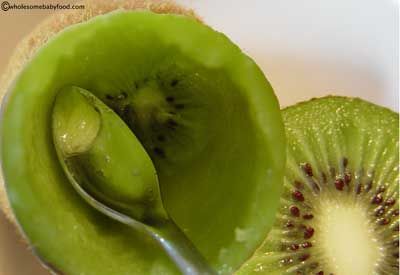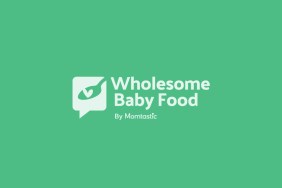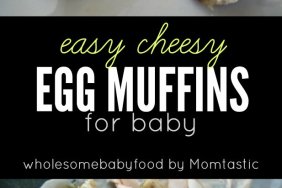Kiwi for Baby Food – Learn About Feeding Your Baby Kiwi and the Age to Introduce Kiwi
![]() Introducing kiwi to baby between 8-10 months old (some say as early as 6 months). Kiwi fruits are very nutritious for your little one but they are acidic. This acidity makes Kiwi a bit difficult to serve to babies under 8 months of age.
Introducing kiwi to baby between 8-10 months old (some say as early as 6 months). Kiwi fruits are very nutritious for your little one but they are acidic. This acidity makes Kiwi a bit difficult to serve to babies under 8 months of age.
The Goodness of Kiwi for Baby
The Chinese Gooseberry (kiwi) is said to have been brought to New Zealand by missionaries returning from China in the early 1800’s. The kiwi did not make it over to America until the 1960’s. The Chinese Gooseberry was renamed “kiwifruit” after the kiwi birds that are native to New Zealand.
The Kiwi fruit (chinese gooseberry) is rich in Vitamin A, Vitamin C, fiber, potassium and even folate. Kiwi is not a high allergy risk however it is acidic. The acidity of the fruit may prompt mouth rashes and possibly rashes on the bottom.
Kiwi is a very good source of dietary fiber and loaded with antioxidants.
|
Nutrients in 1 Medium Sized Kiwi Fruit
|
|
| VITAMINS:Vitamin A – 66 IUVitamin C – 70.5 mgVitamin B1 (thiamine) – .02 mg
Vitamin B2 (riboflavin) – .02 mg Niacin – .26 mg Folate – 19 mcg Contains some other vitamins in small amounts. |
MINERALS:Potassium – 237 mgPhosphorus – 26 mgMagnesium – 13 mg
Calcium – 26 mg Sodium – 2 mg Iron – .24 mg Also contains small amounts of manganese, copper and zinc. |
When can I introduce Kiwi to my baby?
If your baby has shown any food sensitivities such as tummy troubles or the tendency to get diaper rashes, you may want to hold off serving kiwi until she is between 10-12 months old. As mentioned, kiwi is not a highly allergenic fruit so there should be no concerns about a true allergy to this fruit. Try serving kiwi cut into small dices or mashed between 8 to 10 months old.
Do the little Kiwi Seeds Need to be Removed?
You should not have to remove the seeds when offering your baby kiwi. The seeds are very tiny and should not pose a choking hazard. Use your own judgement based on baby’s ability to tolerate textures.
How to select and store Kiwi for yummy baby and finger food recipes
 Hooray! According to the EWG, kiwi is not one of the “dirty dozen” foods that are most highly contaminated with pesticides – purchasing organic kiwi is a personal choice.
Hooray! According to the EWG, kiwi is not one of the “dirty dozen” foods that are most highly contaminated with pesticides – purchasing organic kiwi is a personal choice.
When selecting any type of kiwi, be sure the skin is not bruised and no visible indentations are present. You want a kiwi that is a bit firm as the squisher-softer ones may be just about to go bad. If you just cant wait for kiwi to ripen, place it in a paper bag with an apple or a banana on the counter and it will be ready to eat in 2 days.
Store kiwi for up to 3-4 weeks in the fridge and for about 1 week on the counter. Kiwi is really a non-demanding fruit!
Kiwi Recipes for Baby Food
Kiwi “Puree”
Peel kiwi and blend or puree as needed.
Kiwi Salad
Ingredients:
- 1 peeled and diced kiwi
- 1/2 peeled banana – diced
- 1 peeled and diced pear
Directions:
Step 1: Toss it all in a bag with your favorite coating (crushed cereal, wheat germ for example) and serve in a bowl. This is a really slippery, finger food so coating the dices with crushed cereals or wheat germ really makes for easier pick-up.
You can also give the “salad” a whiz in a blender/food processor to make a fruit puree – add yogurt and make a tasty smoothie!
Baby’s Yummy Kiwi Chicken
Ingredients:
- 2 chicken breast halves, boned and skinned
- pinch salt (optional)
- pinch freshly ground pepper
- pinch thyme, crushed
- 1 tablespoon butter or margarine (we prefer olive oil.)
- 2 tablespoons white wine (use either water or white grape juice when making for small children)
- 1 kiwi, peeled and sliced
Directions:
Step 1: Pound chicken to flatten to about ¼ inch; sprinkle with salt, pepper and thyme.
Step 2: Heat butter or oil in skillet. Sauté chicken on medium-high about 4 minutes or until cooked and tender; turn once halfway through cooking time. Remove to warm platter and keep warm.
Step 3: Add wine (or water or juice for small children) to skillet; cook and stir 2 minutes.
Step 4: Add kiwi fruit; cook and stir gently 30 seconds longer.
Step 5: Serve with brown rice – chop or puree as needed for your baby’s preferred taste/textures.
Green Monster
Ingredients:
- 2 ripe kiwis
- 1 ripe avocado
- 1/2 cup cubed mango
Directions:
Step 1: Peel kiwi and slice
Step 2: Peel and pit the avocado
Step 3: Combine all ingredients and whizz in a blender.
You can also mash this up and offer as finger food, adding yogurt or even applesauce – caution, very messy.
Foods Good to Mix With Kiwi
![]() Poop Caution! If your baby is eating kiwi, there is no need to remove the little seeds. Be aware that the seeds will pass through and you may see them again in baby’s diaper!
Poop Caution! If your baby is eating kiwi, there is no need to remove the little seeds. Be aware that the seeds will pass through and you may see them again in baby’s diaper!
![]() Remember, always consult with your pediatrician regarding introducing solid foods to your baby and specifically discuss any foods that may pose allergy risks for your baby.
Remember, always consult with your pediatrician regarding introducing solid foods to your baby and specifically discuss any foods that may pose allergy risks for your baby.
![]() This site complies with the HONcode standard for trustworthy health information:
This site complies with the HONcode standard for trustworthy health information:
verify here.
ORAL ALLERGY SYNDROME |
|---|
| The food on this page may be one involving OAS. OAS occurs when a person sensitive/allergic to pollen develops a reaction to fruits/veggies that have a similar type of pollen. Itching & swelling of the lips, the mouth and/or throat are typical symptoms. These symptoms normally appear within minutes of eating the offending food and may be worse during the spring and fall pollen seasons. Rarely is an OAS life threatening. Click below to learn more. |
| Birch Pollen Allergies |
| Birch pollen allergies are associated with apple, carrot, cherry, pear, peach, plum, fennel, walnut, potato, spinach, buckwheat, peanut, honey, celery, and kiwifruit. |
| Cedar Allergies |
| Japanese cedar allergies are associated with melon, apple, peach and kiwifruit. |
| Mugwort Allergies |
| Mugwort allergies are associated with celery, carrot, spices, melon, watermelon, apple, hazelnut, and chestnut. |
| Grass Pollen |
| Grass pollen allergies are associated with melon, tomato, watermelon, orange, rice and cherry. |
| Ragweed Pollen |
| Ragweed allergies are associated with melon, chamomile, honey, banana, and sunflower seeds. |
| Latex |
| Latex allergies may be cross-reactive to banana, avocado, kiwi and papaya. |


